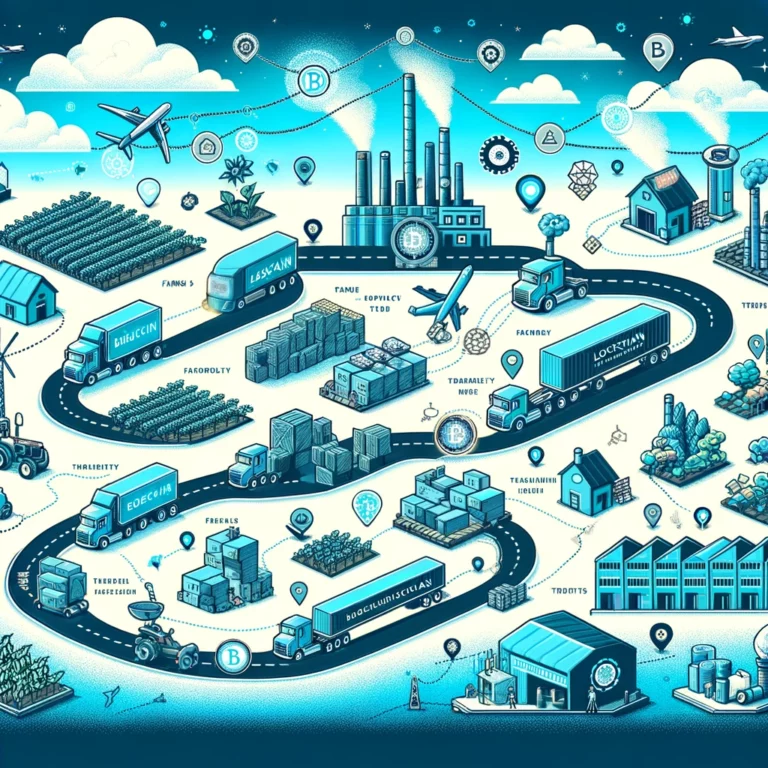Global Economic Forecast: Key Trends to Watch in 2024
As we approach 2024, the global economic landscape is characterized by a blend of recovery, uncertainty, and transformation. Emerging from the turbulence of recent years, economies worldwide are navigating a complex array of challenges and opportunities. Understanding the key trends shaping the global economic forecast for 2024 is crucial for businesses, investors, and policymakers alike. In this blog post, we’ll delve into the major trends and factors that are expected to influence the global economy in the coming year.
1. Economic Recovery and Growth Prospects
The global economy is projected to continue its recovery from the pandemic-induced downturn, though the pace and sustainability of this recovery vary across regions.
- Growth Projections: According to the International Monetary Fund (IMF) and World Bank, global economic growth is expected to moderate in 2024 compared to the robust rebound of previous years. While advanced economies are likely to see steady growth, emerging markets may experience stronger expansion due to improved vaccination rates and economic reopening.
- Sectoral Performance: The recovery is expected to be uneven across different sectors. Technology and digital services, which have thrived during the pandemic, will likely maintain strong growth. Conversely, sectors heavily impacted by restrictions, such as travel and hospitality, may continue to face challenges, though signs of recovery are anticipated.
- Regional Variations: In the United States, the economy is expected to grow moderately, supported by continued consumer spending and fiscal policies. In Europe, growth may be tempered by inflationary pressures and geopolitical uncertainties. In Asia, China’s economic performance will be a key factor, with its growth trajectory influenced by domestic policies and global trade dynamics.
2. Inflation and Interest Rates
Inflation remains a significant concern for many economies, and central banks are likely to continue their efforts to manage inflationary pressures through monetary policy adjustments.
- Inflation Trends: Inflation rates, which spiked in many regions in 2022 and 2023, are expected to remain elevated but may stabilize in 2024. Supply chain disruptions, energy prices, and wage pressures are key factors contributing to inflation. Central banks will need to carefully balance their policies to address inflation without stifling economic growth.
- Interest Rate Policies: In response to inflation, central banks in major economies are anticipated to maintain or even increase interest rates. The Federal Reserve in the U.S., the European Central Bank (ECB), and other central banks will likely continue to implement tightening measures to control inflation. Higher interest rates may impact borrowing costs, consumer spending, and investment decisions.
3. Geopolitical Tensions and Trade Dynamics
Geopolitical uncertainties and evolving trade relationships are likely to influence global economic conditions in 2024.
- U.S.-China Relations: The economic relationship between the United States and China remains a critical factor in global trade. Trade tensions, regulatory changes, and geopolitical rivalries could impact supply chains and market access. Companies with significant exposure to both markets will need to navigate these uncertainties and adapt their strategies accordingly.
- Regional Conflicts: Ongoing regional conflicts and geopolitical risks, such as the situation in Eastern Europe and tensions in the Middle East, could affect global economic stability. Businesses operating in or with these regions should stay informed about potential disruptions and assess their risk exposure.
- Trade Agreements and Policies: Trade policies and agreements will continue to evolve, impacting global trade flows and investment. New trade deals, tariff changes, and regulatory adjustments may create opportunities and challenges for businesses engaged in international trade.
4. Technological Advancements and Digital Transformation
Technological innovation and digital transformation will be central themes in the global economic landscape of 2024.
- Artificial Intelligence and Automation: AI and automation technologies are expected to drive productivity and efficiency across various industries. Businesses that invest in these technologies may gain a competitive edge through enhanced operations, data-driven decision-making, and improved customer experiences.
- Digital Economy Growth: The digital economy will continue to expand, driven by advancements in e-commerce, fintech, and remote work solutions. Companies that leverage digital tools and platforms will be well-positioned to capitalize on changing consumer behaviors and market trends.
- Cybersecurity Concerns: As digital transformation accelerates, cybersecurity will remain a critical focus. Companies must invest in robust cybersecurity measures to protect their data, infrastructure, and customer information from growing threats.
5. Environmental Sustainability and Green Investment
Sustainability and environmental concerns are becoming increasingly central to economic and investment decisions.
- Green Transition: Governments and businesses are placing greater emphasis on environmental sustainability and the transition to a green economy. Policies aimed at reducing carbon emissions, promoting renewable energy, and addressing climate change will influence investment trends and business practices.
- Investment in Clean Technologies: Investments in clean technologies, such as renewable energy, electric vehicles, and energy-efficient solutions, are expected to grow. Companies involved in these sectors may benefit from supportive policies, consumer demand, and technological advancements.
- Corporate Sustainability: Companies will face growing pressure from stakeholders to demonstrate their commitment to sustainability. Integrating environmental, social, and governance (ESG) criteria into business strategies will be crucial for attracting investment and maintaining a positive reputation.
6. Labor Market Trends and Workforce Changes
The labor market is evolving as businesses adapt to new realities and workforce preferences.
- Remote Work and Hybrid Models: Remote and hybrid work arrangements are likely to continue as businesses and employees embrace flexible work models. Companies will need to invest in technology and processes to support remote collaboration, productivity, and employee engagement.
- Skills and Talent Development: The demand for digital skills and technology expertise will remain high. Businesses will need to focus on talent development and upskilling to address skill gaps and stay competitive in a rapidly changing job market.
- Labor Market Dynamics: Workforce demographics, labor shortages, and changing employee expectations will impact labor market dynamics. Companies will need to adapt their recruitment and retention strategies to address these evolving trends.
7. Financial Markets and Investment Opportunities
Financial markets will continue to be influenced by a range of factors, including economic policies, geopolitical events, and market sentiment.
- Stock Market Performance: Equity markets may experience volatility due to inflation concerns, interest rate adjustments, and geopolitical uncertainties. Investors should remain cautious and diversify their portfolios to manage risk.
- Emerging Investment Opportunities: Sectors such as technology, renewable energy, and healthcare are expected to present significant investment opportunities. Investors should consider these areas for potential growth and returns.
- Cryptocurrency and Digital Assets: The cryptocurrency market will continue to evolve, with regulatory developments and technological advancements influencing its trajectory. Investors interested in digital assets should stay informed about market trends and regulatory changes.
As we look ahead to 2024, the global economic forecast is characterized by a mix of recovery, adaptation, and transformation. Key trends such as economic recovery, inflation management, geopolitical tensions, technological advancements, sustainability, and labor market changes will shape the global economic landscape. Businesses, investors, and policymakers must stay informed about these trends and adapt their strategies to navigate the evolving economic environment. By understanding and anticipating these key trends, stakeholders can better position themselves for success in the year ahead.







